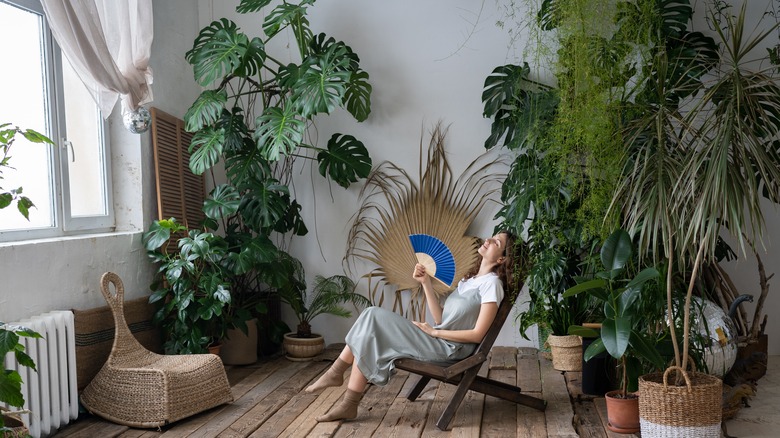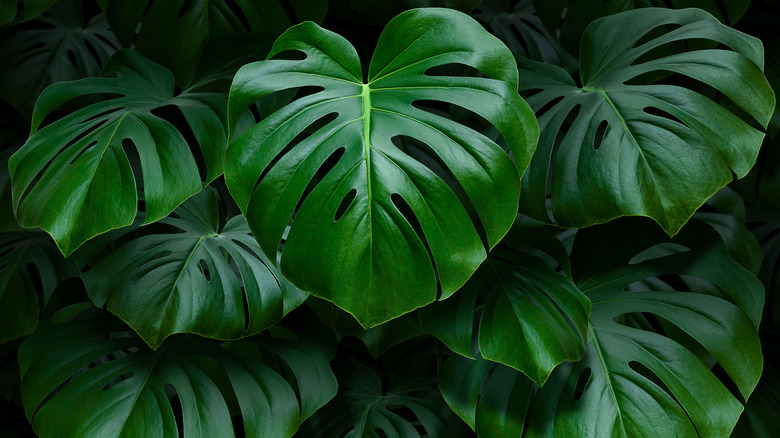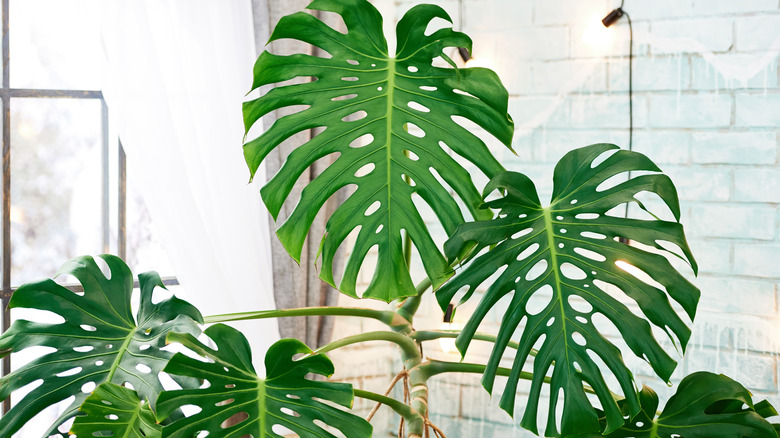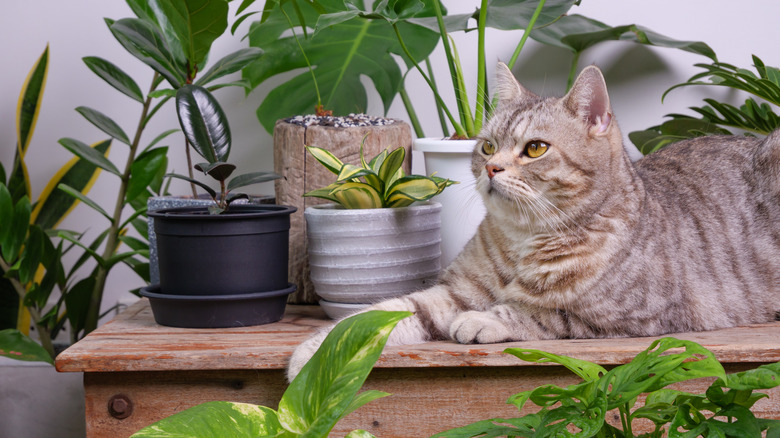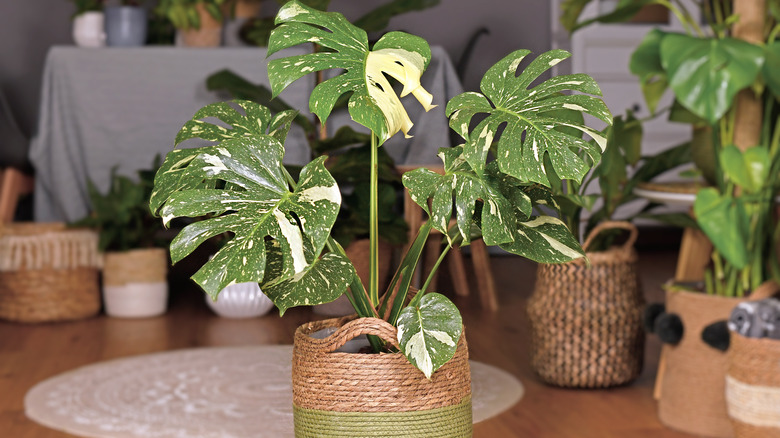Monstera Vs Split Leaf Philodendron: What's The Difference?
The Arum (Araceae) plant family is huge, and many of the plants we all know and love derive from it, including the monstera deliciosa and the split-leaf philodendron. Yes, they are indeed different plants. Also known as the swiss cheese plant, the monstera deliciosa is a climbing plant with aerial roots that can either grow in soil or air, via Britannica. This particular monstera is known to be larger once it matures, growing up to 66 feet in the wild and as big as 8 feet when domesticated in the home.
Split-leaf philodendrons do not get nearly as sizable, and Houseplant411 reports that the split leaf typically only grows between 2 to 3 feet indoors. While it is also classified in the Arum family, these philodendrons do not produce fruit like deliciosas. At first glance, these plants may look like twins, but they are more like distant cousins with many differences from proper care to appearance.
Cosmetic differences
One of the first telltale signs that the plant you are looking at is not a monstera deliciosa is the shape of the leaves. You will find the deliciosa to have a heart-like form and be much bigger than the leaves of a split leaf. The philodendron's leaves will be rounder with textured edges, and they cannot grow epiphytic. Monsteras tend to have more consistently smooth and green foliage, unlike the split leaf's, which often feature various shades of green.
Candide finds that deliciosa's stems feature joints similar to an elbow, assisting with the plant's movement — you won't find these joints on a split leaf. The fenestration of the two plants is also slightly different. A deliciousa's fenestration won't extend to the leaf's edge unless the leaf grows large enough to where the connected area breaks open. Many smaller monsteras will have their holes fully connected, whereas a split leaf's will always carry to the edges and have an open cut.
Difference in care
The care of these two plants is relatively similar, with slight differences. Monsteras need soil with good aeration and drainage; anything too dense will pose root issues such as rotting or suffocation. Bloomscape advises that they should not be set directly in the sun but rather receive indirect light to avoid scorching their leaves. Water your monster routinely in summer months when the soil begins to dry, and more sparse watering one to two weeks during colder dormant periods.
The philodendron requires soil mixed with perlite and rocks to give proper drainage. It also needs indirect light, but it handles direct sunlight better than a monstera. Waterings are less frequent during warmer seasons, only requiring a nice drink one to two weeks when the top of its soil dries. Another critical difference in how these plants are cared for is the contrast in propagation techniques. MasterClass explains that when propagating a split leaf, you will cut 3 to 6 inches of a stem that holds a node and plant it in moist soil. However, when reproducing a deliciosa, you place your cutting in water, and once it forms roots, it can be planted in the soil.
Determining which one to buy
Now that you know the differences between the split-leaf philodendron and the monstera deliciosa, you may wonder which one you should buy. Of course, it's essential to assess the difference in care but also think about the space you have — if you have pets, and your design preferences.
Deliciosas require more space than a split leaf. They can start small, but if you take good care of your monstera, it will need a lot of space to grow. If you live somewhere smaller and don't foresee a lot of room for one plant, the philodendron may be the better option. If you have pets, know that both plants contain toxic calcium oxalate crystals. House Plant Central clarifies that this won't be lethal if ingested, but it will make your pet ill. Maybe this means a deliciosa works better for you because it can climb up the wall away from the dog, or perhaps the split leaf is more suitable with its smaller size, that's less of a target for the cat.
Understand your aesthetic
The split leaf and monstera are undeniably stunning, and although they certainly have their differences, both will likely fill that missing piece in the room. Determine which plant will work better with your design aesthetic. Monsteras have become very trendy, Racked verifies. Its brighter green foliage and heart-shaped leaves appeal to people in a way the split leaf may not. Due to this, the deliciosa tends to be more expensive. Many people also choose to branch out and get variegated forms of the monstera, such as the Thai constellation and the albo, which sell for upwards of hundreds of dollars.
As you go out and pick out your deliciosa or philodendron, be sure not to check a label and grab it off the shelf. Petal Republic comments on how often plant shops mislabel these plants, compelling you to pay for the incorrect one. It is an easy mistake to make, but you have all the information you need to tell them apart and determine which one you want to bring home.
